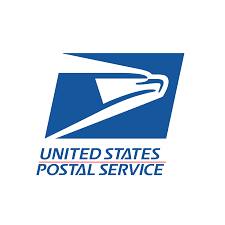With the passage of the Postal Reorganization Act in 1970, the Post Office Department became the United States Postal Service. The UPPS now uses a logo with a “standing” eagle as its symbol. The USPS logo is, “Your mail, your priority.” The symbol represents how quickly mail is delivered from sender to recipient. It shows the extent to which the service is available across the United States. The history of USPS and its logo meaning will be discussed in the article.
Brief History of USPS
Postal service in the United States, including its territories and associated states, is provided by the United States Postal Service (USPS), often known as the Post Office, U.S. Mail, or Postal Service. This agency operates independently within the executive department of the federal government. It is one of the few federal agencies that the United States Constitution gives clear authority. As of the year 2021, the USPS employed 516,636 people full-time and another 136,531 people part-time.
Also, Benjamin Franklin, who had done something similar for the colonies of the Kingdom of Great Britain, was named the first postmaster general during the Second Continental Congress in 1775. This was the start of what would become the United States Postal Service.
Also, the Post Office Department was set up after the Postal Service Act was signed into law in 1792. The United States Postal Service is now a separate part of the government. It was moved out of the cabinet in 1872 and reorganized under the Postal Reorganization Act of 1970. There has been a significant reduction or elimination of direct tax subsidies to the USPS since the 1980s. The only ones left are for spending on disabled people and foreign voters.
The United States Postal Service (USPS) is bound by a number of laws requiring it to offer the same low prices and high quality of service everywhere it operates because it has a monopoly on “letter” delivery within the United States and because it has a universal service obligation (USO). Even though it faces competition from private package delivery providers like United Parcel Service, FedEx, and Amazon, the Postal Service has exclusive access to “U.S. Mail” and personal letterboxes in the United States.
Evolution of USPS
The Post Office received financial assistance from the government in the 1840s. After all, the country was still extending into the south and west, so keeping lines of communication open was essential. However, between 1845 and 1851, laws gave the post office a monopoly in letter-carrying, rendering private firms uncompetitive. Reduced rates helped letters dominate the postal activity. Also, in 1851, Congress set aside money every year to support a project that it thought would lose money.
Furthermore, there was still room for improvement in the service. Delivery of mail directly to customers’ homes was first tried by postmasters in 1863. At the turn of the 20th century, people in rural areas were able to convince the government to let them have their mail brought right to their homes. As a result, rural mail began to be delivered to rural residents by dropping letters into cigar boxes and lard pails on country roads.
Even though rural delivery was expensive—there was a $40 million deficit in 1914—the money made from urban delivery made up for it. The federal government also contributed financially. Political figures have come to support the concept of universal service obligation, which holds that all citizens have a right to affordable access to a core set of benefits.
Parcel post was the new frontier. At the turn of the 20th century, the Postal Service said that letters couldn’t weigh more than four pounds. Anything heavier had to be sent by private companies. On the other hand, the four biggest private carriers had formed a cartel and were charging confusing and often unfair prices. In addition, Congress ended the price-fixing ring and added postal service in 1913. In the first six months, 300 million packages were sent. Modernized USPS
The United States Postal Service Department
After the Constitution was ratified in May, an act signed into law on September 22, 1789 (1 Stat. 70) created an interim postal service and the job of Postmaster General. But on September 26, 1789, President George Washington chose Samuel Osgood, who was born in Massachusetts, to be Postmaster General. In spite of the fact that there were 75 post offices and roughly 2,000 miles of post roads by 1780, the postal personnel only included a Postmaster General, a Secretary/Comptroller, three surveyors, one inspector of dead letters, and 26 post riders.
In the short term, the post office was kept open by the Act of August 4, 1790 (1 Stat. 178), and the Act of March 3, 1791. (1 Stat. 218). The Act of February 20, 1792, granted the Postal Service broad powers. Later laws strengthened and standardized the Postal Service’s administrative structure. They also set rules for its future growth and gave it more responsibilities.
Until 1800, Philadelphia was the nation’s capital and the primary distribution point for mail. In that year, officials were able to transport all postal records, furniture, and supplies to the new Post Office location in Washington, D.C. with just two horse-drawn wagons.
In 1829, President Andrew Jackson chose William T. Barry of Kentucky to be the first Postmaster General and a member of the Cabinet. Congress didn’t establish the Post Office as an executive department until June 8, 1872, long after Ohioan John McLean began calling it the Post Office Department.
About this time, in 1830, the Postal Service established an investigative and inspection office called the Office of Instructions and Mail Depredations. Most people agree that P. S. Loughborough, who was the office’s first director, was the first Chief Postal Inspector.
USPS Logo Overview
The United States Postal Service (USPS) is an autonomous government organization that provides postal services to every person in the United States. The first day of operation for the service was July 1, 1971. However, that date is just one in the long and complicated history of the company. In 1775, when statesman Benjamin Franklin first assumed leadership, he established the United States Post Office. In May 2020, American businessman Louis DeJoy is the nation’s new postmaster general.
- Inception: July 1, 1971
- Headquarters: Washington, D.C., U.S.
USPS Logo Meaning and History
The United States Postal Service, or USPS, is the government agency in charge of mail delivery in the United States. However, the United States Postal Service (USPS) is one of the world’s largest organizations and a separate government department of the United States government. A little over 800,000 individuals work for the United States Postal Service. There is the official documentation of the service’s origins dating back to the year 1775.
In spite of popular belief to the contrary, the USPS does not have a slogan. However, USPS has a new logo: a bald eagle, the universally known symbol of the United States. Furthermore, this image appears on the current USPS logo. The postal operator’s bird symbol has changed over time. In addition, the connotation of speedy shipping predates her, but so did other icons.
USPS LogoEvolution 1829-1970
The Post Office Department of the United States was established in 1792. In Roman mythology, he was the patron saint of the Mercury trade and a messenger of the gods. Ebenezer Hazard proposed making the messenger of the gods the central figure. This occurred in 1782, when there was still only the United States Post Office and not the USPOD.
Hazard prioritized showcasing the Mercury for the post office. The god sprinted across the field, his arms akimbo. You could always spot him since he always wore a winged helmet and carried a caduceus wand. When you look at the words “SEAL OF THE GEN POST OFFICE DEPARTMENT,” you can see that the ring contains a mythical character. The USPS didn’t have a new logo until 1837.
Furthermore, the USPS changed to its current logo, featuring a riding man, in 1837. And not just any rider; a postman, as shown by the fact that his saddle bore the words “U.S. MAIL” and a satchel stuffed with messages. Not coincidentally, the first couriers rode horses when delivering packages and letters over land.
Amos Kendall, who works for the U.S. The USPS logo should be dynamic to convey the postman’s enthusiasm for his work. The words “POST OFFICE DEPARTMENT” and “UNITED STATES OF AMERICA” were written around the outer rim of the circle containing the black-and-white illustration. On the right and left sides of the country’s name were five stars.
Brand Evolution Continues 1970- Till Date
In the middle of 1970, President Nixon signed the Postal Reorganization Act, officially establishing the United States Postal Service. Simultaneously, the bald eagle took center stage in the USPS logo. He floated above the danger zone, wings spread wide. A crimson stripe again drew attention to the black letters that read “U.S. MAIL” at the bottom. But this USPS logo was made by Raymond Loewy, who has a Master of Industrial Design. It has a circle with the name of the full-service company and nine five-pointed stars around the edge.
USPS now uses the “Sonic” eagle as its official logo. By focusing on the bird’s head, the artist was able to convey more emotion. Furthermore, the new USPS logo is more active and “powerful,” and that’s not all. At first, the eagle appeared to be perched on a branch in the original version of the USPS logo; now, however, it appears to be in flight. The white parts of the USPS logo design above the eagle’s head at least suggest that it is slicing through the air.
Above the logo, in blue, is the word “USPS.” The information is shown in two lines, with a red bar in between them. There’s also a variant with “USPS.com” written next to the logo.
The USPS Icon
The USPS logo appears bold and fashionable. The blue and white color combination represents trustworthiness and professionalism, assuring clients that they are in excellent hands. The USPS logo is a white silhouette of a hawk’s head in profile, looking to the right. The outline of the bird is against a cool, deep blue. The bird, which is a beautiful symbol of speed and strength, goes well with the icon’s professional and simple color scheme.
The USPS Logo Font and Color Scheme
The American Bald Eagle represents progress and the pioneering spirit of the USPS logo. Furthermore, the eagle is a symbol of American majesty and power and the delivery of U.S. mail. The artists represented her in a quick flight upwards, giving her an air of decisiveness that carries over into the USPS logo’s current iteration.
Also, an engineering professor and fan of hydrodynamics Andrew Higgins came up with a number that can be used to estimate the eagle’s speed. He reasoned that the white halo around the head must stand for a shock wave, and so on. The scientist used a series of equations to determine the Mach number, and the result was 4.9. This suggests that the bird can outrun sound waves. As a result, two additional Twitter users joined in. When they factored in the change in blue, they calculated that the eagle was traveling at close to 60,000 kilometers per hour.
The USPS logo has a unique and contemporary feel because of the italic Postmaster font. Daniel Zadorozny, a typographer, created all of the letters, including the triangular “A.” The USPS logo’s primary colors are white, red, and blue. They are the colors #FFFFFF, #DA291C, and #004B87 in the Hexadecimal color space.
Does the USPS Restrict the Use of Its Logo?
The United States Postal Service (USPS) logo is a registered trademark owned by the United States government and its usage requires express written authorization from the USPS. Nonetheless, anyone can try to get approval to use the USPS logo by contacting their regional post office.
Who Designed the United States Postal Service (USPS) Logo?
The Young & Rubicam’s design bureaus, notably a division of the company known as CYB Yashumura Design, were the ones responsible for creating the logo that is used by the United States Postal Service (USPS). The advertising agency gave their clients not one, not even a dozen, but 300 different versions of the USPS logo to choose from.
Is the US Postal Service a Trademark?
In the United States, the executive branch of government owns the trademark rights to the USPS trademark, which designates the US Postal Service. Due to the fact that the USPS is a government agency, any violation of rights will have serious consequences.
Interesting Facts About the USPS
It’s likely that you don’t give the United States Postal Service much of a second thought. To you, the postal service is just another facet of daily life that exists to bring you your mail and take care of your goods. But the surprising number of interesting facts about the postal service will make you rethink what you thought before. Here are some fascinating facts about the USPS.
#1. Once Upon a Time, the Postmaster General Had a Measure of Fame
From 1823 to 1829, Presidents James Monroe and John Quincy Adams told John McLean what to do as Postmaster General. This was due to the high value placed on the position’s contribution to the development of the infant nation. After serving as Postmaster General, his next goal is to become a Justice on the United States Supreme Court. However, he was taken seriously as a presidential candidate in subsequent years.
#2. An Amendment to the Constitution Established the U.S. Postal Service
In 1775, Benjamin Franklin took the position of Postmaster General for the first time. Article I, Section 8, Clause 7 of the United States Constitution, which was signed in 1789, says that Congress has the power to “make post offices and post roads.” In 1792, when President George Washington signed the Postal Service Act, he set up the Post Office. However, the modern United States Postal Service didn’t come into being for nearly another two centuries. To date, the USPS has employed in excess of 7.3 million individuals.
#3. In Addition to Airplanes and Trucks, the US Postal Service Also Uses Postal Boats
However, in Michigan, the J.W. Westcott II, a 45-foot postal boat, has a contract to deliver mail to passing ships on the Detroit River. It is the postal service’s legal obligation to deliver mail to all Americans, including those at sea. In the past, mail was delivered by having a bigger boat pull up next to a smaller boat and lower a bucket on a rope into which letters could be dropped. The boat has its own unique postal code (48222).
Getting your mail delivered by boat isn’t limited to the Detroit River. The 176 households along the 31-mile path on Alabama’s Magnolia River have their mail delivered to a fixed mailbox on their docks by a 15-foot boat.
#4. The United States Postal Service Also Has a Facility to Read Illegible Handwriting
Curious as to how the USPS reads your illegible handwriting? Experts are consulted. Incomprehensible system mail is delivered to Salt Lake City’s Remote Encoding Center. Each piece of mail that is too difficult for the automated mail sorters to comprehend or is wrongly addressed is taken on by the center’s thousand personnel there. In 2013, Deseret News said that it takes these workers an average of four seconds to turn information written by hand on an envelope into information that can be used for delivery.
#5. For 141 Years, Personal Relationships Were the Only Way to Break Into the USPS
During the presidency of Thomas Jefferson (1801–1809), it became common, even though it was unethical, for the winning candidate to fire a lot of federal officials and replace them with people who supported the winning party. But when Andrew Jackson became president in 1828, he gave this political perk to the postal service, which at the time had 75% of the civilian federal government workforce.
He made it common for a new president to fire a large number of postal workers and replace them with political allies. Surprisingly, this policy didn’t end until President Richard Nixon put an end to it in 1969. At least when it came to corruption, he had to say no to this one.
#6. Trolls’ earliest facilitator was the United States postal service
In the United States, “vinegar” and “poison” valentines were a common trend in the late 19th and early 20th centuries (and England, btw). Each card had a caricature of a male or female stereotype, such as a miser or a spinster, and a sexist verse to go with it. Consider this one example: The only person who would kiss you is a jackass like yourself. Therefore, “Hey, Lover Boy, the place for you” is atop the shelf.
#7. The Color Blue Isn’t Necessarily a Permanent Fixture on USPS Postal Boxes
As part of the organizational transition from the Post Office Department to the United States Postal Service, in 1971 [PDF], the postal service began painting street mailboxes blue. In the century before, boxes were many different colors, from bright red during the Victorian era to dull olive green after World War I, because there was too much paint.
#8. Sometimes USPS Employees Are Attacked by Dogs
There have been attacks on USPS employees by dogs. However, there were 5,767 dog attacks on postal workers in 2014. Last year, Los Angeles had the highest rate of canine attacks on mail carriers of any city in the United States, with 74 mail carriers becoming victims. If a mail carrier encounters an aggressive dog, he or she should use the satchel as a makeshift shield.
In addition, mail carriers face threats from more than just canines; wasps can make homes in mailboxes as well.
#9. The Likes of Walt Disney and Steve Carell Both Worked as Mail Carriers in Their Early Careers
It’s no secret that many famous actors, authors, and politicians all started out as mail carriers. Walt Disney, just 16 years old, worked as a mail carrier in 1918. From 1922 to 1924, William Faulkner worked as a postmaster at the University of Mississippi. He didn’t like the job, so when a postal inspector was sent to look into complaints against him, he quit. In addition, comedic actor Steve Carell once delivered mail in a Massachusetts rural community.
#10. Before the Civil War, Everyone Got Mail at the Post Office
It was in Cleveland in 1863 when the concept of “Free City Delivery,” or free house mail delivery, was introduced. It is said that the idea came from Joseph Briggs, a postal clerk in that Ohio city. The previous winter, he saw many women waiting in long lines at the post office, shivering and worried because the mail was the only way for them to find out how their loved ones were doing in the war.
However, his free city delivery service caught on so well that it eventually became the norm across the country. Also, Civil War veterans were given the first choice for new jobs as mail carriers. The Civil War also led to the creation of money orders, which allowed Union soldiers to send money home without risk.
Who Owns USPS?
The Postmaster General, his deputy (which is currently open), and nine governors are in charge of running the USPS. This is similar to how a public company’s board of directors runs the business. The President appoints individuals to these positions, and the Senate must approve their appointments before they can begin serving for terms of seven years.
Why Was the USPS Founded?
The United States Postal Service (USPS) began in 1775, when Benjamin Franklin was named the first postmaster general. This was during the Second Continental Congress. Franklin had previously held a similar position for the colonies of the Kingdom of Great Britain. The Post Office Department was established after the enactment of the Postal Service Act in 1792.
What was the first US postal service?
Cincinnati and Marietta were the first two post offices to open for business in the United States, with postmasters being chosen in early June 1794. By the end of the month of July, the position of postmaster in Gallipolis had been filled.
Also, read STANDARD MAIL: How Long Does Standard Mail Take
What is the average pension for a U.S. postal worker?
With 20 years of service and a high-average salary of about $60,000, a postal worker would receive $1,007 per month in gross pay under FERS. To put it another way, the yearly rate of that is close to $12,000. A worker with 40 years of service at the same wage receives $2,013/month or $24,000/year.
Is It Illegal to Use the USPS Logo?
It is true that it is against the law for unauthorized individuals to utilize the USPS emblem. The individual who intends to take a picture of the sign for personal use must make contact with the local post office and get permission from the administration of the facility before doing so.
Who Designed the United States Postal Service Logo?
CYB Yashumura Design Inc. is responsible for designing the logo used by the United States Postal Service. Young & Rubicam owns and operates this business as a subsidiary. It provided three hundred different possibilities from which to chose.
How Can I Use USPS Logo Without Permission?
If the use of the logo will educate, inform, or express opinion in a manner that is protected by the First Amendment of the Constitution, then you do not need to ask permission to use the logo in any way, other than when using a trademark or logo for editorial purposes or as part of comparative product statements.
Can I Copy USPS Logo and Sell It?
It is not only unethical but also illegal to steal someone else’s trademark, such as their company logo. Copying a company logo is a major violation of their copyright and trademark, as logos are protected by intellectual property regulations. Even while some people are aware of this fact, others continue to steal concepts from other sources since they believe it is impossible to be discovered.
Conclusion
The Postal Service services more than 154 million addresses in every county, city, and town in the United States. However, all residents of the United States and its possessions pay the same postage rate for mail sent to any other resident of the United States or its possessions. The fact that the eagle always looks ahead has become a symbol of the USPS’s long history.
Similar Posts
- How to Fill Out a Money Order Correctly: Step-by-Step Guide
- eCommerce Delivery: Best Strategies, Services, Solutions (+Free Tips)
- Most Lucrative Business In The World 2023 (Updated!!)
- How to Send a Letter: Guidelines, Costs, and Other Mailing Options






